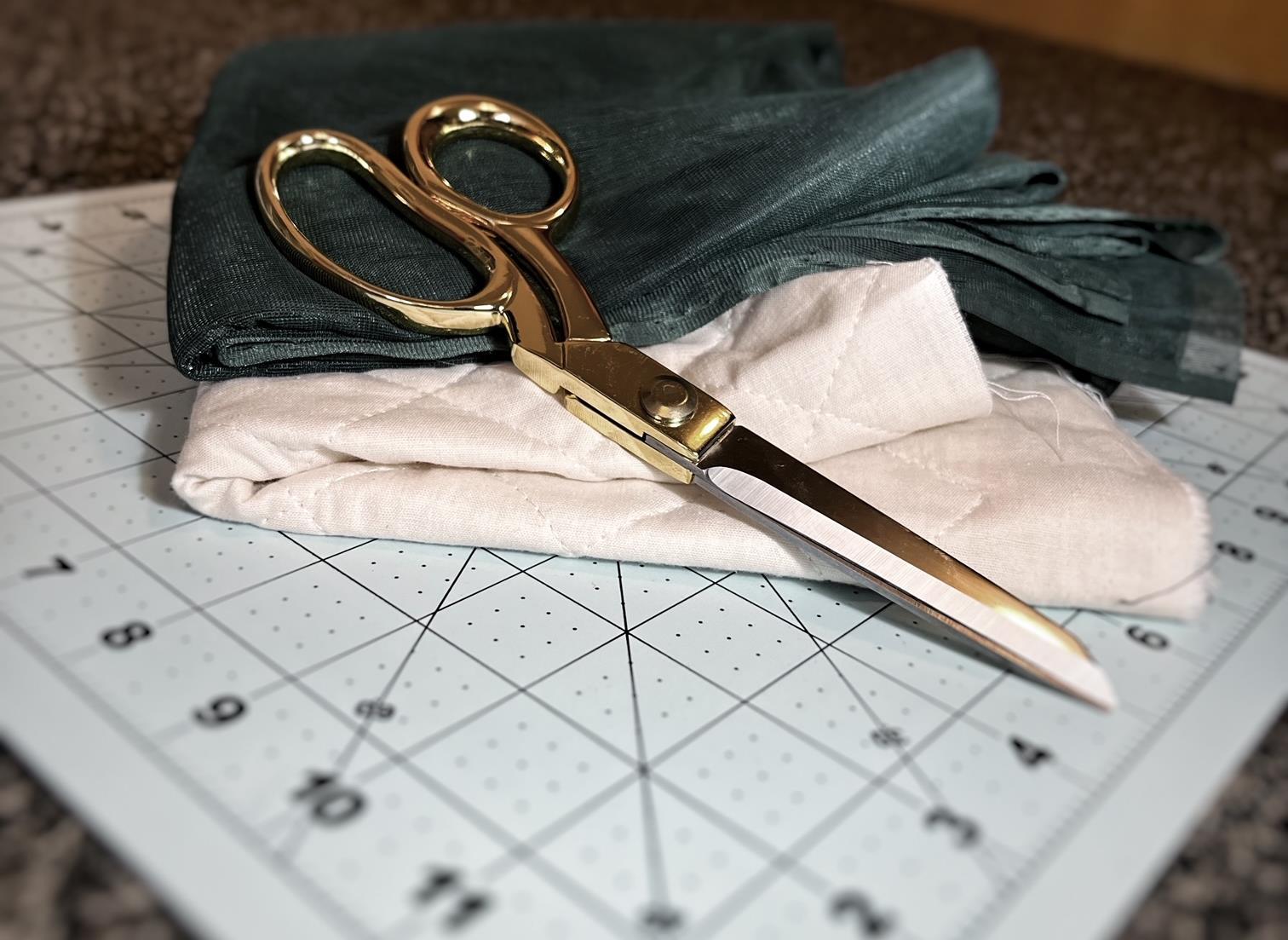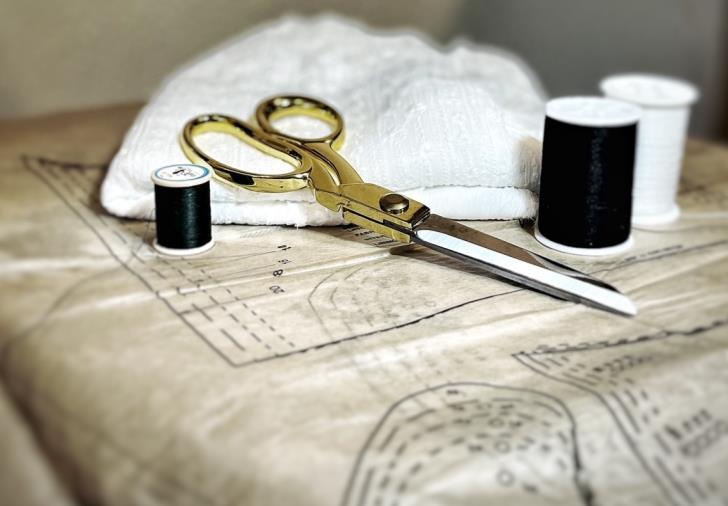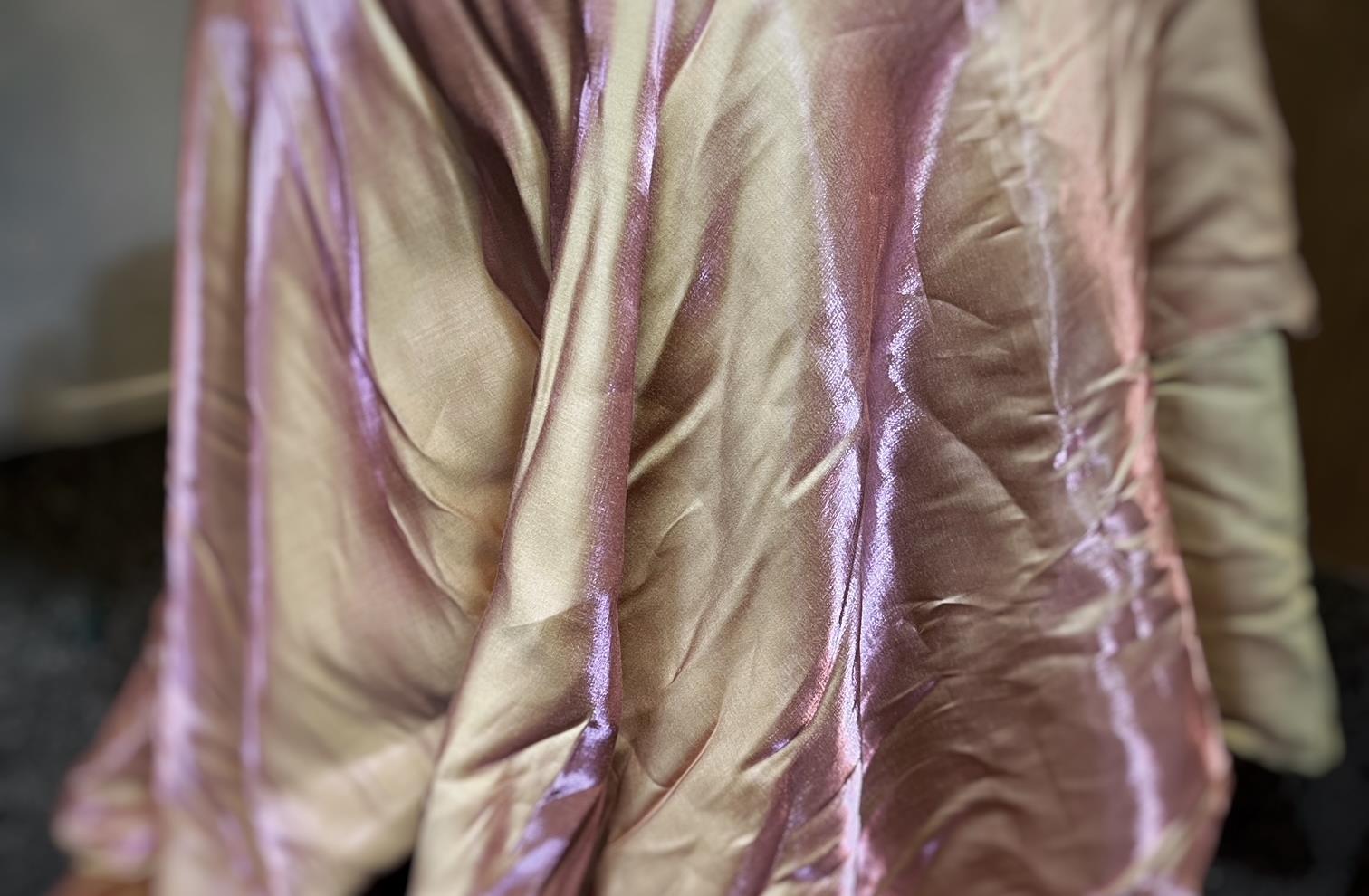Cosplay: A Modern Culture of Costume


The Practice of Cosplay
And the relationships of self, community, and place




The Practice of Cosplay
And the relationships of self, community, and place


The earliest surviving report of a theatrical performance dates to around the year 2000 BC in egypt. The production was akin to a Pasion Play and starred the Egyptian god Osiris (Fort and Kates 1935, 4) This, by the definition given by Matthew Hale, is the earliest record of cosplay. Costume and cosplay has changed drastically since then, but still captures the imagination of people, now in cultures across the globe (Hale 2014, 8).
Hale’s description and documentation of modern cosplay will be a central peice of the discussion of cosplay in the following articles, acting as a jumping off point for three different perspectives and deep-dives into the costumes, characters, and convention expereince that are all part of the exerience of cosplay.
The three article in this issue discuss, in order, the relationships cosplayers have to the character they have chosen to represent, the community of cosplayers at large, and the convention where all this happens. Each author has had their own long histories with cosplay and bring unique perspectives to this vast practice. Cosplay may be an ancient art, but the community that carries it into the present is as alive as ever.

The practice of dress-up Cosplay (costume play) has become a growing phenomenon in communities and fan cultures. In this practice, participants dress up in costumes, often handmade, and attend conventions consisting of countless experiences such as costume contests, character meet-ups, or just interacting with other guests. The key aspect of the practice of cosplay is the character. Cosplayers choose a character to portray that could be based on several reasons such as personality, appearance, favorability, etc. I would like to explore the idea of cosplayers and the
character and what exactly motivates the choice of one's character.
As a participant who has just touched the surface of cosplay culture. I have realized how much a character can shape the community of cosplayers and other casual attendees. The recognition of specific characters builds a sense of folk community by applying the comfort and realization that you both have something in common. A shared interest in an anime, TV series, movie, or book franchise allows a connection of thought as you realize that you similarly like the same thing. Creating a shared interest in the community creates a
folk group or group of people who are able to relate to one another. Mathew Hale in the article, Cosplay: Intertextuality, Public Texts, and the Body Fantastic interviews a cosplayer named Don who says, “when you put the costume on, it changes how you feel, but [it’s] also the reactions you get from people. Seeing people get excited or laugh at you being that character or that specific person. It affects how you respond to them,”(11). Being someone who has usually attended conventions as Disney princess characters, I have found the increase of attention and awe that comes from younger children. It also changes how I would respond to their interactions as many of the younger audience may believe that they are visiting with a real princess so you need to acknowledge that by acting the part.
Not only the material cosplay but also the physical actions and dialogue of a character can be an important part of the cosplay character. Theresa Winge states in the text, Costuming the Imagination: Origins of Anime and Manga Cosplay, “cosplayers spend immeasurable monies and hours constructing or purchasing costumes, learning signature poses and dialogue and performing and conventions and parties, as they transform themselves from “Real World” identities into chosen (fictional) characters”(Winge 65).
Cosplayers that are super focused on their character idea might want to increase their performance by making their character portrayal more realistic. Or a character might be created around the idea of the dialogue of a meme or actions of a trending gesture that thus spawns the decision to choose a certain character.

 Photo by Olivia Bodily
Photo by Olivia Bodily
Cosplayers and the Character• 4
Photo by Olivia Bodily
Photo by Olivia Bodily
Cosplayers and the Character• 4
At Salt Lake FanX Comic
Convention 2022, I had the opportunity to briefly interview two cosplayers about their experience with choosing their characters. One cosplayer was mainly interested in the visual aspect of their character while the second interviewee was more focused on the symbolic placement and personality of the character. The first cosplayer dressed in an elaborate gown and headdress portraying Queen Amidala from the star wars franchise. I asked her why she decided to choose this costume and character. She said, “Well I do love star wars but I do love… I think they have the best costumes and they’re so interesting and unique and just kinda like scifi-ish. So I always just loved every costume she wore. ” This young woman cosplayer presented herself very formally as she aimed to look just like the character from the films. Nicole Lamerichs
addresses this area of character cosplay in her article, Embodied Characters: The Affective Process of Cosplay where she says, “choosing a character is part of the affective process in which cosplayers engage, but it is often compromised by the cultural context. First, physical appearance or preferences play a role because cosplay is a highly visual practice. Practical choices may involve characters’ age, skin color, and even gender,”(220). This cosplayer addressed that she loves star wars and would be considered part of the fandom or folk group. She
was mainly focused on the aspect of visual design and I was just one out of many people who wished to talk to her at the convention(220).
The second person I had the opportunity to speak to was a woman a little bit older than the first who looked like she was attending with her family and was dressed in a traditional Cinderella costume. When I approached her she was very happy to answer the question. I questioned her about why she chose her specific costume and how she related to her character. She responded, “Well as all children do we dress up as Cinderella… and I never grew up, I am still a child.”

“Wellasallchildren dowedressupas Cinderella…andI nevergrewup,Iam stillachild.”
This second cosplayer was not as focused on the luxury of the physical appearance of the costume but more on the character and what that meant to her. One of the reasons this cosplayer is attached to the Cinderella character is because it reminds her of being a child. In the same article by Lamerichs she states, “The character is given an independent existence. Fans speak of the character's favorability, carefully distinguish them from themselves, and often entitle them with a sense of personality that is consistent or ‘in character’,”(220). Outside of the blue dress and blond hair, Cinderella is a symbol of The Walt Disney Company, kindness, and following your wishes and dreams. As opposed to fully committing to the character
through costume like the first woman, this second cosplayer is more focused on the implied ideals of the character instead of just the physical appearance. Cosplay is a growing aspect of pop culture that involves participants dressing up as characters that could focus on personality, appearance, symbolism, trends, and many other qualities. As Lamerichs said, “the activity is not just a projection of the self, but also an interpretive process of engaging with the character,”(220). By participating in or viewing cosplay we are able to interact with different groups of folklore as we all find similarities in our current preferences of media and pop culture and build a better understanding of the importance of the growing culture around us.
 Photo by Lauren Cunningham
Photo by Lauren Cunningham
Hale, Matthew. “Cosplay: Intertextuality, Public Texts, and the Body Fantastic.”
Western Folklore 73, no. 1 (2014): 5–37.
http://www.jstor.org/stable/24550744.
Lamerichs, Nicolle. “Embodied Characters: The Affective Process of Cosplay.” In Productive Fandom: Intermediality and Affective Reception in Fan Cultures, 199–230. Amsterdam University Press, 2018.




https://doi.org/10.2307/j.ctv65svxz.14.

Winge, Theresa. “Costuming the Imagination: Origins of Anime and Manga Cosplay.” Mechademia 1 (2006): 65–76.
http://www.jstor.org/stable/41510878.


Cosplay, at least in the scope of material culture, is a somewhat unique experience. For most people it is an activity that takes place a few times a year, as a brief interruption of normality. An opportunity arises for many individuals to show off their handcrafted, mass produced and custom ordered costumes, most of the time in the form of a text informed reference or replication of a character from a piece of popular media (Hale 2014, 8). At least this is the individual's perspective of cosplay. There is a larger perspective of cosplaying that can be explored in an entirely different perspective. Instead of the behavior of the individual, the individual's perspective of the
larger community can expose more of the mechanics of a cosplay community as a whole. Through a set of interviews, and a review of published sources, this article hopes to study the form of cosplay as a community. The basis on which this study of cosplay community function is achieved is through the concepts of communities of practice, liminality and communitas. According to Etienne and Beverly Wenger-Trayner, a community of practice has three defining features: a shared interest, and physical space in the form of a domain, a community in the form of relationships focused on sharing information and skills, and a shared practice in the form of
IanWebsterthe tools, skills, and experiences that are passed around within the community (2015, 2).
Liminality and communitas are both present within a cosplay community and conventions to an extent. Arnold van Gennep describes liminality as existing within a rite/event that takes place outside of the “previous world” and is transitional to a new stage of existence (1909, 1960, 21). While cosplay conventions are not exactly transitional from one stage of life to the next, they do exist outside of the continuous world, as they typically only last for two or three days and are meant for activities that do not normally take place outside of that space. Victor Turner described communitas as a phenomenon that exists within a liminal space that is characterized by “...homogeneity and comradeship… ” (1969, 96). The feeling of attending a
cosplay convention does not exactly adhere to this description either, as is made known through the interviews. Not all individuals attending a convention feel a larger connection to the community.

The interviews that were conducted are meant to bring more evidence towards cosplay being a community of practice, as most of the questions asked inquired about learned skills, community relationships, and practices that are common within the community. An online community where a lot of the members take part in cosplay and regularly attend conventions, is where people were found for the interviews. Each person that was Interviewed was asked
six of the same questions, and one person was asked an additional seventh question. Further mention of “domain(s)”, “community”, and “shared practice” are in reference to the three aspects of communities of practice, as established early in the article.
“Ian: What connections do you think the cosplay community has to each other?”

“Ryan: Cosplayers mainly connect socially through conventions, social media, and sometimes have independent cosplay parties. Larping communities also hold independent events.” “Derrick: Conventions, message boards, people who get into it, and are very skilled are easy to gravitate towards and it is fun to meet them at conventions,” (2022). The responses to this question specifically provide evidence for the existence of a “domain”, as well as “community” within cosplay communities. Conventions, message boards, social media, and even private parties are all “domains” for the practice of cosplay to take place. Social media and message boards may also serve as a setting for “community” as a place for relationships of sharing skills and information to develop. While the intention for this question was to find ways in which individuals within a cosplay community experienced communitas, the responses mostly described the physical form of the community, rather than personal connection, however, Derrick's comment about people being easy to gravitate to in the community may be slight evidence of this.
“Ian: What skills have you learned from the cosplay community?” “Ryan: Various
techniques of craft related skills such as woodworking, and using tools such as hot glue guns. ” “Derrick: Building things out of unorthodox materials, learning what materials are used for props, for example, Ryan used a pringles can to make a gun-sword for me. Some conventions have restrictions on props, such as: no metal, costume size, ect… ” (2022). The responses here provide evidence for a “shared practice” within the cosplay community. Ryan’s response details certain skills and tools that are used, while Derrick’s response describes both the materials to use, and materials not to use.
“Ian: What stands out about the cosplay community to you?” “Ryan: The openness of information. Cosplayers don’t keep trade secrets related to cosplaying,” (2022). This
response from Ryan provides further evidence for “community”, as it details a culture centered around sharing information openly within the cosplay community.

Derrick’s response, although insightful, was not relevant to the scope of this article.
The interviews provided substantial evidence towards cosplay communities displaying all three characteristics of a community of practice. There was not much evidence for the experience of communitas taking place at conventions, however, despite intending for questions to answer this, it may be at the fault of the specific questions that each interviewee was asked.
“Buildingthingsoutof unorthodoxmaterials,learning whatmaterialsareusedfor props,forexample,Ryanused aPringlescantomakeagunswordforme.”

Derrick, interview by author, December 4, 2022
Gennep, van Arnold, Monika B. Vizedom, and Gabrielle L. Caffee. The Rites of Passage. University of Chicago Press, 1960.
Hale, Matthew. “Cosplay: Intertextuality, Public Texts, and the Body Fantastic.” Western Folklore 73, no. 1 (2014): 5–37.
http://www.jstor.org/stable/24550744.
Ryan, interview by author, November 19, 2022
Turner, Victor. The Ritual Process: Structure and ANTI-STRUCTURE. ITHACA, NY: CORNELL UNIV. PR, 1977.
Wegner-Trayner, Etienne, and Beverly Wegner-Trayner. “Introduction to Communities of Practice - Wenger-Trayner.” Wegner-Trayner, September 4, 2022.
https://www.wenger-trayner.com/introduction-to-communities-of-practice/.


 LaurenCunningham
LaurenCunningham
Comic conventions occur yearly throughout not only the entirety of the United States but also internationally. Major franchises such as Marvel post on their social media and highlight different conventions and individuals in attendance. The real eye-catching aspect of these photos are the costumes and cosplays that convention attendees wear. While looking at photos of conventions and cosplays can give you a small look and bring intrigue, there is nothing quite like experiencing the convention for yourself.
I went to my first convention when I was 14. In 2016 the Salt Lake comic convention FanX was fairly new. This first experience at a convention completely altered my calendar for the foreseeable future. I have attended FanX yearly (with the COVID-19, 2020 exception) and one thing that made me fall in love with the experience was the cosplay. I remember walking into my first convention and being utterly overwhelmed The amount of people was one thing; however, the creative cosplays left me absolutely astonished.
Walking into my most recent convention in September of 2022, I was used to the cosplay and crowd, yet I am always tantalized by the diversity and creativity that is around every corner. Going into the 2022 FanX convention with a more scholarly and research-based perspective changed my entire convention experience I found myself not only being more observational, but it also created a new level of curiosity I had never experienced. I was able to photograph both the convention and individual cosplays as well as interview cosplay creators one on one.
FanX is a three-day convention experience, Thursday through Saturday. I attended the convention with my sister, the first day of the convention we dressed in gender-bent cosplays of The Big Bang Theory characters Leonard and Sheldon. Gender-bended cosplays entail an individual taking a character that belongs to one gender and presenting it in a different gender (Hale 23).
One man I spoke to dressed as Luisa from the Disney film Encanto. When asked why he chose this costume he stated, “My daughter just really wanted to go as Mirabel and we only do family costumes. My wife thought it would be funny to have me

go as the strong girl so here I am. I also thought it was funny, so. ” (Luisa Cosplayer 2022). Gender-bent cosplays allow cosplayers to choose from a larger variety of characters and it allows individual creativity to be shown. Females having the ability to gender-bend cosplays is especially profound. Matthew Hale states in their piece Cosplay: Intertextuality, Public Texts, and the Body Fantastic the following of gender and cosplay; “Crossplaying is a creative strategy that provides them with the opportunity to dress as a strong and intelligent male or sometimes genderless characters with which they identify and through which they can express themselves and their fandoms. (Hale 23). I spoke to a woman who was dressed as Eddie from Stranger Things. She explained that she wasn’t trying to portray Eddie as a female, she simply liked the character and wanted to use it. When I asked her about how
this has affected her convention experience, she explained that she felt comfortable dressing in anything. “That’s the beauty of the convention, literally no one cares. Everyone looks crazy so you feel completely normal,” (Eddie
Cosplayer, 2022).This sentiment seemed to be a common theme. When asked why cosplay was important for the convention experience, everyone shared something along the lines of the following sentiments: Cosplay is a way to escape my normal life, immerse myself in the convention, and have fun. Cosplay at conventions is a way to connect with others who like the same thing as me and make new friends. Cosplay at conventions allows me to
“That’sthebeautyof theconvention, literallynoonecares. Everyonelookscrazy soyoufeel completelynormal.”
to remember is that these differences do not affect the quality of your convention experience.

The convention had activities and opportunities that accounted for everyone. FanX has an entire section of the convention that is dedicated to cosplay. These activities involved competitions, cosplay workshops, photo opportunities, and more. “Cosplay is like the most important part of the convention. The shops are cool, the celebrities are alright, the panels are fun, but the real convention is about getting dressed, going out with friends, looking badass, taking cool pictures,” (Anime Cosplayer, 2022).
express myself somewhere where everyone else is doing it too and I feel safe from judgment.
One of my favorite cosplays was a man who dressed as John Hammond from Jurassic Park. The costume was simple and inexpensive yet immediately recognizable and well done. In contrast, I spoke to two individuals who dressed in expensive and elaborate Mandalorian and Kylo Ren cosplays. This contrast helps to explicate that cosplays are all so unique and come with a wide range of expense, time, creativity, and intricacy. The important thing

“Cosplayislikethemostimportant partoftheconvention.Theshops arecool,thecelebritiesarealright, thepanelsarefun,butthereal conventionisaboutgettingdressed, goingoutwithfriends,looking badass,takingcoolpictures.”
My sister and I wearing our own cosplays each day allowed me to realize some common practices among cosplayers at conventions. If you are wearing a specific character, it is common for strangers to shout famous lines that have a connection to that character to you. Similarly, if someone is wearing a costume that relates or is the same as yours, often they will approach you and start a conversation. It is also totally normal to take pictures of cosplays or have people ask to take pictures of your cosplay. I had over 200 people ask for pictures with me or of me for my 2021 cosplay at FanX. It is completely normal and a large part of convention culture.
While studying cosplay at this convention, I recognized two main types of cosplayers. The first being the cosplayers who simply wear the costume and continue to present themselves as themselves. The second are cosplayers who take on their characters personality and act as the character would. An example of the acting cosplayers was a man who dressed as the Mario Warrior, it was a more mature twist on the classic Mario character. This cosplayer was dedicated to keeping in character, even though some of the character traits were developed by him since it had some originality to it. This shows just how cosplay can act as an extension of the person themselves, showing their personality, interests, creativity, and dedication.
In sum, a majority of cosplayers see their cosplays as an integral part of the convention experience. Cosplay is used as a means of self-expression, a way to create connection with others, and an escape from the real world. Many cosplayers see their cosplays and the conventions as a way to find those that they can relate to, I found that many strong friendships were created through conventions and cosplay. A sense of

l community surrounding cosplay is created and strengthened at comic conventions. The convention experience is one of Immersive social interaction between a arge group of diverse individuals with a shared connection of entertainment and convention topics. Cosplay is one aspect of conventions that creates that creates that

connection and community among its members. Most importantly, conventions allow for freedom of expression without judgment, this creates a space for individuals to display their interests and creativity in a positive environment and create lasting memories and relationships.
Hale, Matthew. “Cosplay: Intertextuality, Public Texts, and the Body Fantastic.”
Western Folklore 73, no. 1 (2014): 5–37.
https://www.jstor.org/stable/24550744.
The growth of cosplay as both a hobby and a culture in recent years has created ever broadening styles and traditions within the the bounds of cosplay. Wether people do it for the joy of making the costume, the thrill of becoming the character, or the enjoyment of being with people who share your passions, more and more people are participating in it ever year. Less than four years the number of people that attended the Salt Lake FanX convention doubled (Romero 2018).
Each participant has their own unique connections to the activty and background and skills that they bring to the craft, creating a widely diverse community that shares a deeply –loved common ground.
The articles in this issue have brought to attention ther reasons why individuals choose their characters and the feelings attached to each portrayal, the sociality and community bonds that exist within cosplay, and the unmatched expereince of attending a fan convention. Each of these focus on completely seperate aspect of cosplay, but are all a part of what makes cosplay what it is.

Where Did It Come From? And Where Does It Go?
(Where Did It Come From? Cotton Eye Joe)
Fort, Alice B. and Herbert S. Kates. 1935. “Minute History of the Drama.” New York: Grosset & Dunlap. 4. http://www.theatrehistory.com/origins/egypt001.html
Hale, Matthew. “Cosplay: Intertextuality, Public Texts, and the Body Fantastic.” Western Folklore 73, no. 1 (2014): 5–37. http://www.jstor.org/stable/24550744.

Romero, McKenzie. 2018. “FanX says $4M judgment would 'destroy' company, hurt Utah economy.” Deseret News. KSL. Uploaded October 10, 2018 at 9:40 p.m.
https://www.ksl.com/article/46404322/fanx-says-4m-judgment-woulddestroy-company-hurt-utah-economy
WhereDiditBegin?An IntroductiontoCosplay OUTRO
CosplayandtheCharacter
CosplayandtheConvention Experience
Cosplay:UnitedinCostume?
SpecialthankstoKathrynWielandfortheuseofherimagesandlikeness
Allimageswerecollectedwithverbalpermissionfromthesubject
Emily Cragun Author Olivia Bodily Editor&Author Lauren Cunningham Author Ian Webster Author